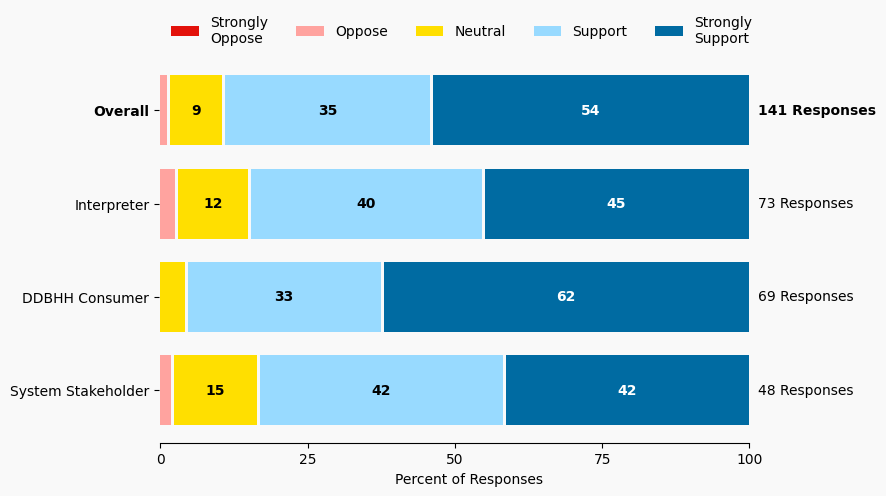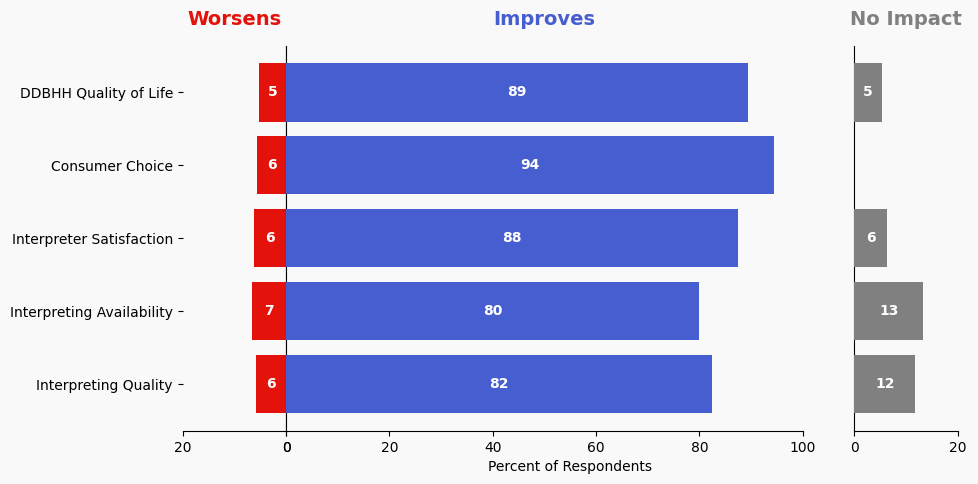10 Create Centralized Website of Resources, Including a Directory of Interpreters and Specializations
Issue: Not everyone is aware of all available resources, even though some sites with resources currently exist.
Proposed Solution: The Commission to create an online resource that includes: ● Programs serving DDBHH people Mental health and SUD services Social security supports – DHS ● Comprehensive directory of current working interpreters in Minnesota ● Comprehensive directory of current interpreter referral companies in Minnesota, including specialty areas and contact info ● Programs and resources for interpreters (mentorships, workshops, communities of practice, etc.)
Expected outcome: Having this information available creates more transparency and organized information when DDBHH consumers, hiring entities and interpreters are seeking resources. Higher quality of interpreting services may be achieved because there is more knowledge for selecting interpreters for specific settings. Knowing more about interpreters, including specialty areas, also empowers DDBHH people to seek interpreters who fit their interpreting settings. Interpreters can highlight their skill sets and work in settings where they are most qualified.
Who is impacted: Hiring entities, consumers, new and working interpreters
Update: Multiple suggestions were made to not create a new central resource but ensure that existing resources are more comprehensive. An interpreter roster with video introductions and specific skill sets publicly listed is the only resource not already in existence for the general public.
Timeline: 6 months

Summary of Support Image Description
The stacked bar charts show how respondents rated their level of support and the total number of responses. The percentage for the five support levels is shown from left to right: Strongly Oppose (Dark Red), Oppose (Light Red), Neutral (Yellow), Support (Light Blue), and Strongly Support (Dark Blue).
Respondents may identify with multiple subgroups. The overall level of support is:
Overall
Strongly Oppose: 0%
Oppose: 1%
Neutral: 9%
Support: 35%
Strongly Support: 54%
Click to see the detailed image description for each subgroup.
Interpreter
Strongly Oppose: 0%
Oppose: 3%
Neutral: 12%
Support: 40%
Strongly Support: 45%
DDBHH Consumer
Strongly Oppose: 0%
Oppose: 0%
Neutral: 4%
Support: 33%
Strongly Support: 62%
System Stakeholder
Strongly Oppose: 0%
Oppose: 2%
Neutral: 15%
Support: 42%
Strongly Support: 42%
Overview of Respondents Opting for In-Depth Solution Analysis
After indicating their support level, 12% of the 141 respondents opted in to further assess whether the solution would worsen or improve on five metrics. Of the opt-in reviewers (18 respondents), 83% supported the solution, 16% were neutral on the solution, and 0% opposed the solution.
The remaining 123 respondents did not opt in to further assess the solution. Of these people, 90% support the solution, 8% were neutral on the solution, and 1% opposed the solution.
Reviewer Evaluation of Solution Effectiveness

Solution Effectiveness Image Description
The stacked bar charts show how respondents assessed the effectiveness of this solution based on five metrics. For each metric, the percentage of respondents is shown from left to right: Worsens (Red), Improves (Blue), No Impact (Gray).
DDBHH Quality of Life
Makes It Worse 5%
Makes It Better 89%
No Impact 5%
Interpreter Satisfaction
Makes It Worse 6%
Makes It Better 87%
No Impact 6%
Consumer Choice
Makes It Worse 5%
Makes It Better 94%
No Impact 0%
Interpreting Availability
Makes It Worse 6%
Makes It Better 80%
No Impact 13%
Interpreting Quality
Makes It Worse 5%
Makes It Better 82%
No Impact 11%
Reviewer Feedback and Insights
Interpreter
Comments from Interpreters highlight concerns about how interpreter specializations would be evaluated, and that self-identification may not necessarily be an indicator of quality.
Deaf, DeafBlind, Hard of Hearing
Comments from DDBHH Consumers indicated that this solution would significantly increase consumer choice but that it may be challenging to get broad participation from interpreters to register. One suggestion highlighted the Wisconsin ODHH Sign Language Interpreter webpage as a possible model.
System Stakeholder
Comments from System stakeholders indicated that success requires ongoing maintece and updates which leads to concerns about funding stability and the most appropriate ownership to maintain the centralization. Comments also suggested collaborating with State Services to avoid duplicate work or reinventing the wheel.
PREVIOUS SOLUTION
9 Explicitly Teach DDBHH K12 and College Students about Working with Interpreters
Issue: There is no consistent formal education for DDBHH students to learn how to work with interpreters.
NEXT SOLUTION
11 Complete Studies about DDBHH Communities and Interpreting Field
Issue: Insufficient demographic information about DDBHH Minnesotans.
Leave a Reply